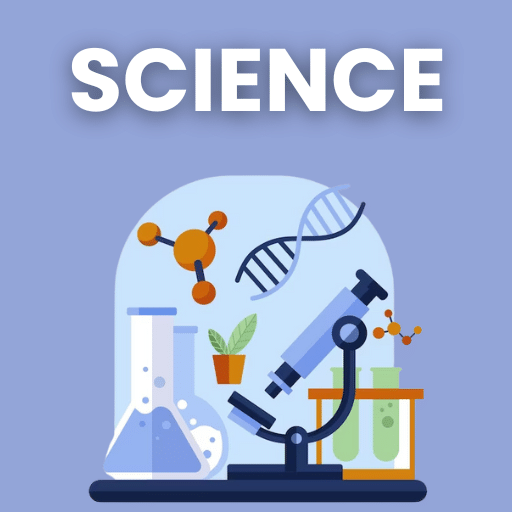Introduction to Software | General Awareness for SSC CGL PDF Download
| Table of contents |

|
| Introduction |

|
| System Software |

|
| Utility Software |

|
| Application Software |

|
| Computer Networks |

|
Introduction
Software is a collection of instructions that guides a computer in processing information.
It can be categorized into three main types:
System Software

System software is designed to operate and control computer hardware, and provide a platform for running application software. It can be further divided into two main components:
1. Operating System
An Operating System is the most crucial software on a computer. It manages the computer’s memory, processes, and all hardware and software operations. Here are the core functions of an Operating System:
- Process Management: Controls and schedules the execution of processes, ensuring efficient performance.
- Device Management: Manages hardware devices, facilitating communication between the OS and peripheral devices.
- Memory Management: Allocates and deallocates memory space as needed for various applications and processes.
- Application Program Interface (API): Provides a set of tools and protocols for developing and interacting with applications.
Types of Operating Systems
- Real-time Operating System: Ensures that processes are completed within a fixed time frame, used in systems where timing is critical.
- Multi-tasking and Single-tasking Operating Systems: Multi-tasking allows multiple tasks to run simultaneously, while single-tasking allows only one task at a time.
- Distributed Operating System: Manages a group of independent computers, making them appear as a single system to users.
- Network Operating System: Provides features to manage and facilitate communication across a network of computers.
Examples of Operating Systems
- Disk Operating System (DOS): A single-user, single-tasking OS with basic kernel functions, running only one program at a time.
- Unix: A multi-tasking, multi-user OS used widely in workstations and servers.
- GNU: A Unix-like OS developed by the GNU project, aiming to be a complete Unix-compatible software system.
- Linux: A Unix-like OS developed under the model of free and open-source software, widely used across various devices.
- Mac OS: An open-core graphical OS developed by Apple, based on Unix.
- Microsoft Windows: A graphical interface OS developed by Microsoft, including:
- Windows 10: Released in July 2015, designed for various devices like PCs, tablets, and Xbox.
- Windows Server 2012: Formerly known as Windows Server 8, it is a network operating system used for managing network resources.
2. Language Translators
Language translators convert code written in high-level programming languages into machine language. They include:
- Assembler: Converts assembly language code into machine language.
- Compiler: Translates the entire source code of a high-level language into machine code all at once.
- Interpreter: Executes high-level language instructions line by line into machine code.
Utility Software
Utility software helps manage, maintain, and control computer resources. Examples include:
- Antivirus Software: Protects against malicious software and viruses.
- Disk Tools: Manage and maintain disk storage and file systems.
- Backup Software: Creates copies of data to prevent loss in case of system failure.
 |
Download the notes
Introduction to Software
|
Download as PDF |
Application Software

Application software is designed for specific tasks that users wish to perform, using the capabilities of a computer directly. Examples include word processors, spreadsheets, and media players.
Computer Networks

Computer networks connect multiple computers to share resources and information.
They include:
- Local Area Network (LAN): Covers a small physical area, such as a home or office. For example, a network in a small business.
- Metropolitan Area Network (MAN): Spans a city or large campus, such as a university network connecting multiple buildings.
- Wide Area Network (WAN): Covers large areas, including regional or national boundaries. For example, the internet is a WAN.
- Personal Area Network (PAN): Connects devices within a personal space, like connecting a smartphone to a laptop via Bluetooth.
- Wireless Personal Area Network (WPAN): Uses wireless technologies for PANs, such as Bluetooth or Wireless USB.
- Body Area Network (BAN): Involves wearable computing devices that communicate wirelessly with miniaturized sensors on the body.
- Virtual Private Network (VPN): Allows secure connections over the internet to isolated remote networks, protecting data from unauthorized access.
- Ethernet Networking: Ethernet provides local area network technology, enabling connectivity across various devices and offices, forming the backbone of modern network infrastructure.
|
470 videos|1042 docs|394 tests
|
FAQs on Introduction to Software - General Awareness for SSC CGL
| 1. What is the difference between system software, utility software, and application software? |  |
| 2. How does software play a role in computer networks? |  |
| 3. What are some examples of system software commonly used in computers? |  |
| 4. How does utility software help in enhancing the performance of a computer system? |  |
| 5. Can you provide some examples of application software used in various industries? |  |



























